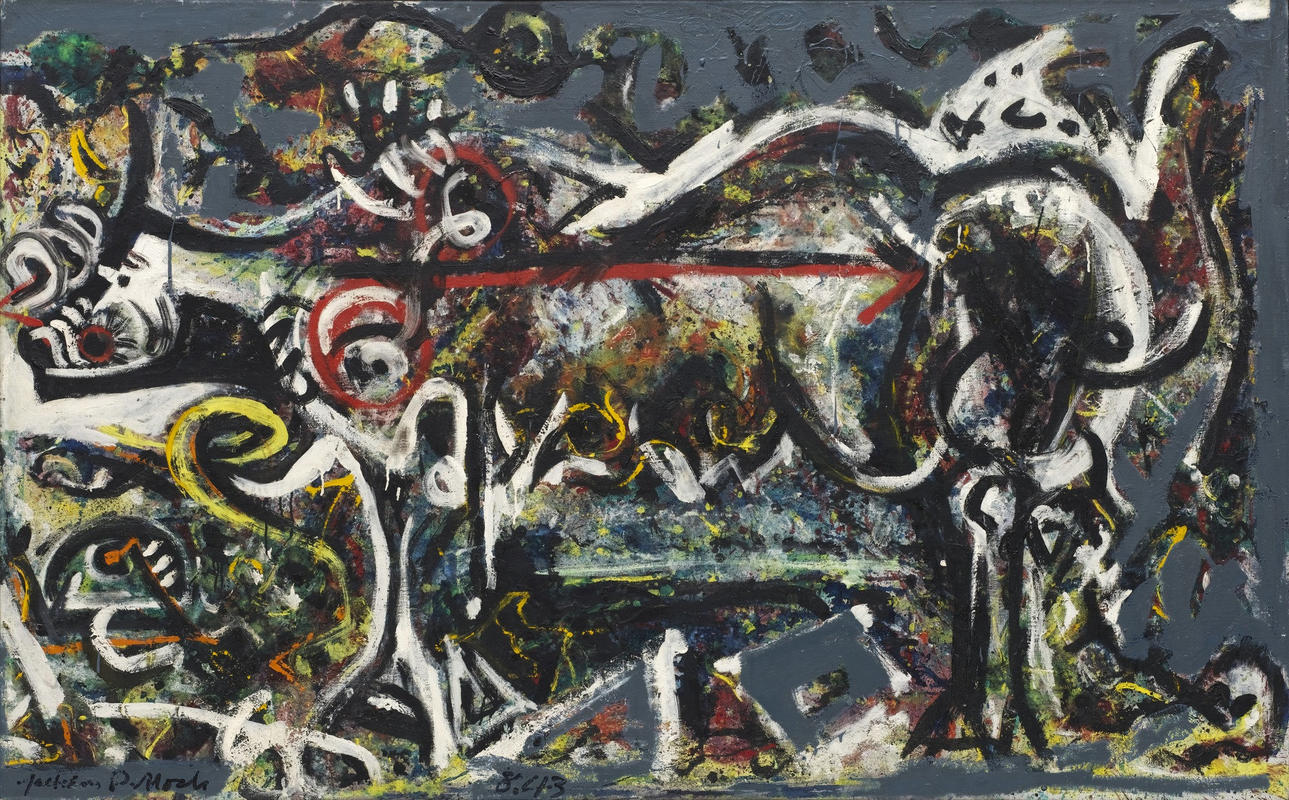More about The She-Wolf
- All
- Info
- Shop

Contributor
When presented with She-Wolf in 1943 at Peggy Guggenheim’s “Art of this Century” exhibition, James Johnson Sweeney commented that Pollock’s “Talent is volcanic."
He went on to say, "It has fire. It is unpredictable. It spills itself out in a mineral prodigality not yet crystallized. It is lavish, explosive, untidy.” This is definitely the case, as Pollock’s talent redefined the meaning of art. However, we cannot say the same thing about his clarification skills. When asked to explain or even give context to this painting Pollock replied that, “She-Wolf came into existence because [he] had to paint it. Any attempt on [his] part to say something about it, to attempt explanation, could only destroy it.” So our interpretations of this work remain unconfirmed. Thanks a lot, Jackson.
What we do know is this painting is pre-drip/splatter painting and the first of Pollock’s to enter a museum. Though it’s part of Abstract Expressionism, it’s kind of out of the movement’s boundaries, which for some, translates to it being bad. Michael Kimmelman of the New York Times wrote in the beginning of his critique, “I should therefore begin by deflating the Pollock balloon: pointing out how bad his early works are; mulling over their tortured symbolism and clotted surfaces; stressing how brief the breakthrough period was…” I mean, sure. They are definitely not as groundbreaking as the drip paintings, but She-Wolf has her merits and we don’t want to be told otherwise! This was also a retrospective review. Critics ate his early stuff up but once the drips came out they wouldn’t deign to appreciate their precursors.
So let’s get down to the nitty gritty. This painting is of a She-Wolf. Not the kind of She-Wolf that Shakira sings about (no matter how catchy her song may be) but the kind that raised Romulus and Remus who then went on to found Rome. Of course, this isn’t confirmed by Pollock…the secretive bastard. But we know that at the time, Pollock and his buddies, Mark Rothko, Jasper Johns and their peers were really into primitive man, ancient mythology type stuff thus leading us to believe this is a representation (albeit a blurry one) of Rome’s She-Wolf grandmother. The painting has a sort of somber hieroglyphic feel to it dictated by the environment of war from which this painting was created. Like a creepy time machine, this painting takes us back to the violent and unsettling times of WWII, the Trojan War and all of the insufferable junior high history lessons we had on the subjects.

















